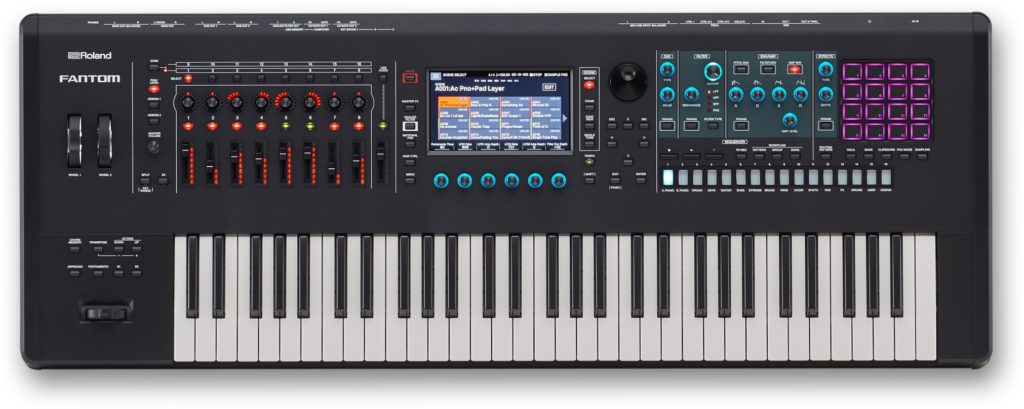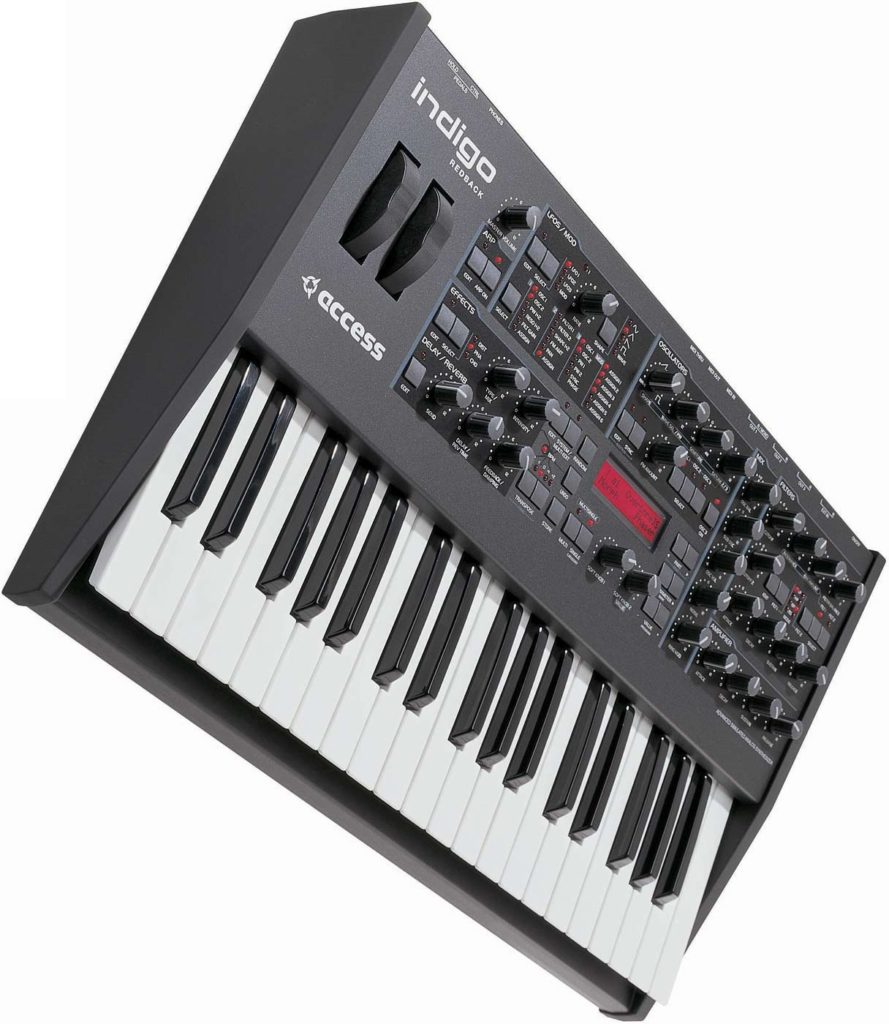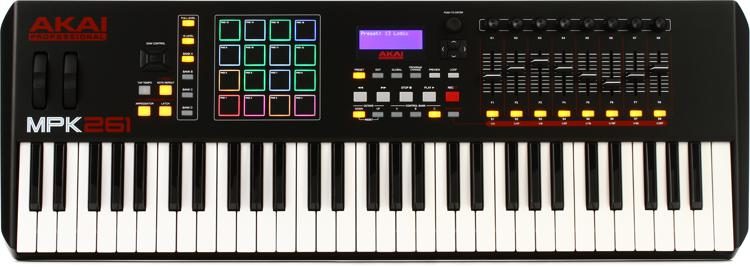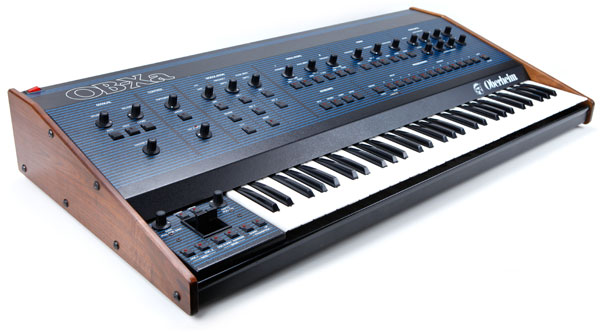MainStage, a professional $30 Mac-only software application, consists of a collection of virtual instruments created for playing keyboards live. In order to understand what that means, it makes sense to understand where we came from. Here’s my crash course 🙂
Originally there was analog synthesis, but we couldn’t convincingly emulate “real-sounding” instruments with them, so we wanted more. In the early 80s, digital technology and keyboards started making an appearance, e.g. the DX-7 in Chicago 17, along with digital sample-playback keyboards which could sample/record and emulate real instruments.

About that same time a protocol called MIDI came on the scene. Musical-Instrument-Digital-Interface, is a simple language for digitally communicating things like “I pushed the F above middle C and hit it this hard (between 0 and 127), and the mod-wheel is in this position (value between 0 and 127). The ability to communicate these messages in 1 milli-second per note, along with the 5-pin cables that connected keyboards (only three of which were actually used, ha) ushered in the age layering keyboard sounds, as well as the age of sequencing i.e. using a computer as digital piano roll.
The 80s were emblematic of both layered keyboard sounds and perfectly sequenced notes, largely thanks to guys like David Foster and Michael Omartian because, for the first time in the world, we could layer instruments (and these guys were seriously prolific keyboard-based producers).
Once we were layering instruments, we started to realize that a keyboard (or synth) is really just a brain making sound, driven by a key-bed telling the brain which notes to make sound for. But the key-beds were taking up a lot of studio space when mostly what we needed were the brains. The rack-mounted keyboard was born. As long as it had MIDI-in and Audio-out, all we really needed to add to that was our favorite feeling keyboard, as a controller, and we could control as many of these rack-mounted keyboards as we wanted.
The next thing we realized were that keyboard brains were really just computers running software. Since we have a powerful computer right here, maybe all we really need is the software to run on that computer? The virtual instrument was born. The beauty and efficiency of virtual instruments is: upgrades are easy, we can run multiple instances of the exact same virtual instrument at the same time (try that with your hardware keyboard), and virtual instrument work better whenever we upgrade our computer – something we routinely do anyway. Bottom line: if you consider a modern laptop a sunk cost, virtual instrument are a no-brainer great deal.
Apples MainStage replaces a rack of hardware keyboard synths, with a bunch of virtual instruments and effects built right in. It also can play host to 3rd party virtual instruments (such as Valhalla DSP effects or Native Instruments Pianos). MainStage is the logical conclusion of this story, and really has an almost fairy-tale ending to it. The price is absolutely astounding for the capability it brings.
So what is a MainStage template? While MainStage has almost a limit-less potential (based on CPU / RAM and the way it is is configured), MS still comes very much in a raw and un-tamed form. The Intuitive Keys templates are my attempt at 1) bringing the very best out of stock MainStage, and 2) configuring it in a highly efficient manner, with the ultimate goal of actually making us all better live keyboardists.
Choosing the hardware keyboard or MainStage Template really depends on what you have and what you need.
Hardware Keyboards
It probably makes sense to think of hardware keyboards in terms of three main categories: Workstations, Stage Pianos, and Synthesizers.

Workstations, make sense when matched with one enthusiastic user who really cares about that particular instrument, and is going to dedicate significant time to learning it. Get used to deep menus, and a steep learning curve. Once an artist has invested the time learning the operating system and has auditioned and tweaked the thousands of included patches to their liking, a workstation can get nearly anything done for them. However because of that high initial time investment, I don’t think workstations are a viable option across a shared user-base.

On the opposite end of the spectrum from workstations, are Stage Pianos. These instruments have a much simpler interface, practically no learning curve, and are meant primarily for performing live. While they don’t have many sounds, perhaps as few as eight, they sit firmly in place of the “house piano”, but of course don’t need to mic’d like a grand piano would. I’m more than happy to jump on the house Stage Piano primarily to trigger IK, or perhaps to even leverage a few of those sounds.

Opposite both Workstations and Stage Pianos are Synthesizers. These are more esoteric machines that focus on one particular synthesis type, such as the new Korg OpSix which features a kind of “altered” FM synthesis revision of the DX-7, or my Access Virus which digital emulates analog synthesis (also called “virtual analog”). These instruments really would NOT work well in all situations, but they nevertheless bring something really special when applied in contrast to other instruments.
Bottom line: with hardware keyboards, if you’re going to really get the most out of it, it really needs to be “yours”. The possible exception to this are “Stage Pianos” which really do make a wonderful choice for a house instrument. They cover the basics real well, but also don’t really cover everything expected from modern keyboards.

The fourth quadrant of keyboards is the MIDI Controller. These guys produce no sound of their own, and only have MIDI and USB connections to them. They are made for controlling MainStage or other software instruments. If you’re going to buy a house keyboard, these makes the most sense to me (and I’ll be so bold as to buck conventional wisdom and say I don’t think that needs to be an 88 note instrument).
I’ve even seen a house controllers paired with a house MacBook Pro, configured with Dante Virtual sound card tied directly to the house mixing board. Literally all I needed was my IEMs and a jump drive with my MainStage template on it, along with my phone to control my monitor mix. This kind of arrangement is ideal for everyone, because the house MBP has all the alerts turned off and I don’t have to risk mine traveling with it. Furthermore, everything stays set up and connected just the way they want it. Working with software in this way, could not be more delightful.
MainStage Templates makes a ton of sense with the user or users already have a MBP as a sunk cost, because a USB controller keyboard and a USB audio interface is much less expensive than a dedicated hardware keyboard. Furthermore, the ability to collaborate online easily occurs with software, because everyone does not need to have the exact same MBP, controller or audio interface. As your library of virtual instruments grow, you still have all your old sounds, but you can include new ones. Furthermore, when you upgrade your MBP, everything works even better!

